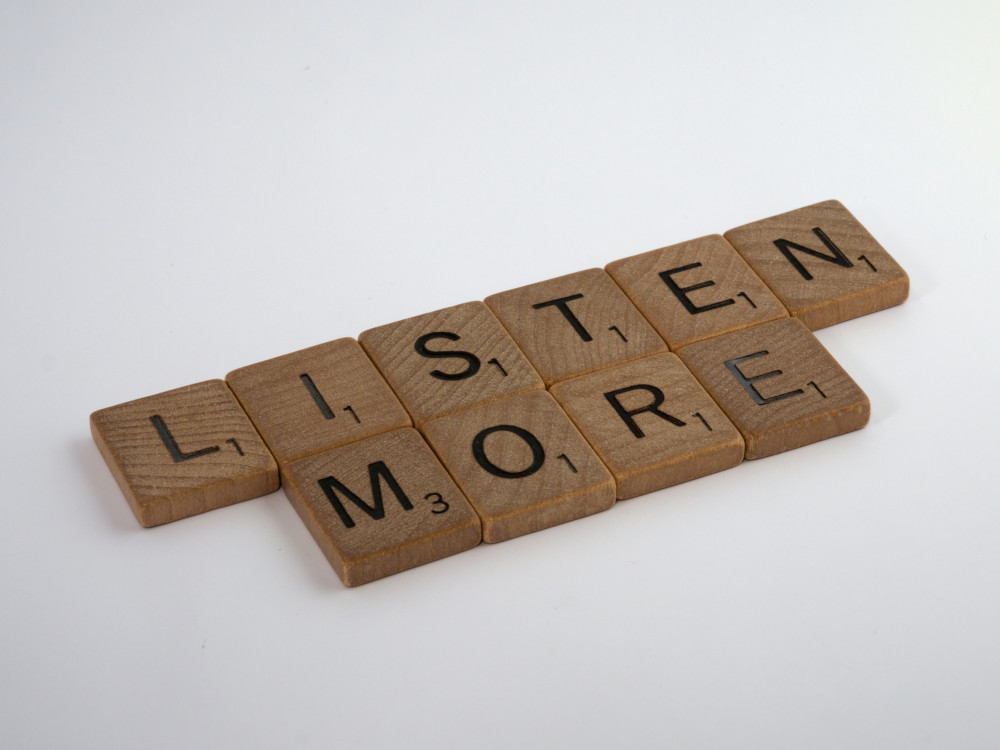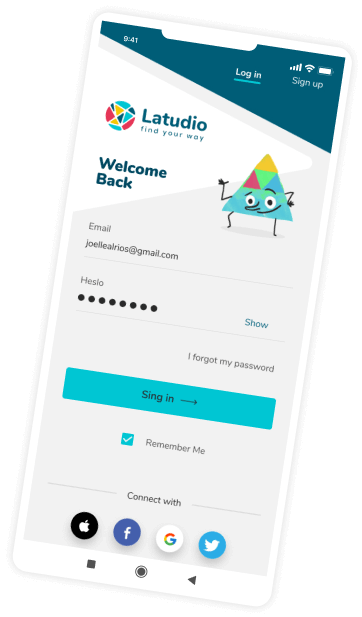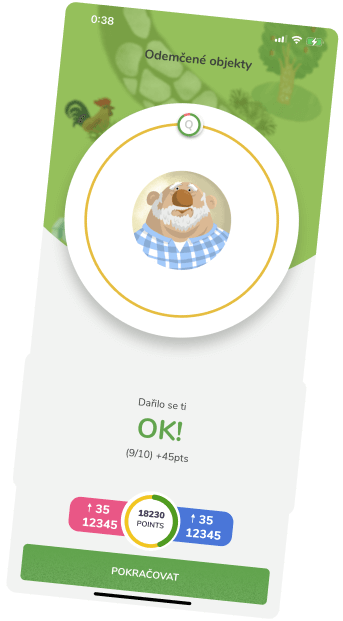The Secret to Improving Listening
Based on Chapters 2, 3 and 5 of the ebook “Breakthrough 5 Challenges with 3 Secret Strategies”
What’s Hard About Listening
Within my first six months of taking Czech courses, I struggled hearing and recognizing Czech words when people spoke. Not only that, but the grammar, too. When I wanted to say something, I had to analyze it for English grammar, then convert it to Czech grammar while at the same time trying to remember vocabulary.
But, through the lens of acquiring a language and smart practice, the challenge became less daunting. My earlier articles will give you those insights.
In those early months, I was doing a lot of memorizing and grammar study. I didn’t do enough listening. Many find listening to be difficult.
5,100 people responded to a Reddit question about what is most difficult in learning a language. 54% said speaking was more difficult than listening (30%). But, there were more comments about listening (58%) than speaking (24%). Below is a list of their comments. (Reddit) Which ones can you relate to?
Can't follow a speaker
Different speeds
The speaker's pronunciation
Swallowing or slurring words
Subtle tones
Not understanding a word
The way sentences are parsed
Differentiating words and accents
It all just runs together, hard to pick out words
They don't use simpler language for you
Entangled in hearing sounds
Can't translate what is being said and think of what to say next
Every word merges into the next
Hearing words that sound the same but have different meanings
Imperfect use of vocabulary and grammar that I’ve studied
Being exposed to unknown vocabulary
Native pitch confusing in a target language
Can't remember the surrounding words
Miss understanding a word and it's gone for good
Losing a sentence or two
Overlapping voices in media sources
Sensory overload
Slang
Are there better ways to practice listening?
“Generally, it’s not learning a new language per se that’s difficult or easy. Nor does it have to do anything with the target language itself (although some are admittedly more complex than others). Instead, it has more to do with how you learn (the strategies), whether the approach you’ve chosen is effective and seems simple or, alternatively, insurmountable.” (MosaLingua)
The “how” you learn is key. This is where language acquisition comes in because of its emphasis on comprehensible input. There is an explanation of both of these in my earlier article titled, “Language Acquisition and Language Learning.”
The Secret to Improve Listening
In the 1980s, Krashen gave a (now) widely cited lecture on language acquisition. Below is an excerpt:
“We acquire language when we understand messages. When people talk to us, and we understand what they say, or when we read something and we understand the message. It is called comprehensible input. Speaking and talking is not practicing, it is the result of acquiring it.
Students expect grammar, vocabulary lists, and exercises. When those aren’t provided, they think it’s a sign of professional incompetence.” But with comprehensible input, “you can get the feel for a language rather quickly, even though it’s not available for usage. Learning is concrete, acquisition is subtle. Learning is pleasant, we like it. When we repeat what we learned, we feel rewarded.”
To get that “feel” for the language isn’t usually how one thinks about acquiring a language. Before I share some specifics about how, consider these quotes about listenings importance:
There are two types of speech: active speech and passive speech. Active speech is “speaking” while passive speech is “listening.” The latter is the base of the former and both of them are closely related. (Zhang and Yuehong Wie)
Listening is more powerful than speaking, it’s easier to arrange (in your brain). It should be the prime focus of language learning. Listening is great preparation for speaking. (Krashen)
There is evidence that not much language acquisition occurs when you don’t understand what is on TV. (Loschky)
… you can’t just read or listen to anything and improve your language. You have to read or listen to things you can understand. Language acquisition happens best when the input is just slightly more advanced than your level. (Budge)
You have to listen to things that you have a chance of understanding. Which can mean access to a transcript at the beginning until you get to understand 70%–80% of it. Make sure you have access to the transcript. Listen a lot to repetitious material, listen to them a lot, repeatedly, easy material. (Kauffman)
Below is a list of some really specific nuts-and-bolts for comprehensible listening input. They are simple enough to figure out, but it’ll be up to you to really try it. Remember the earlier quote about “how you learn.” It’s not just the language you’re learning, but also “how you learn to learn.” So, here’s the list:
Extensive Listening (EL) is a teaching and learning approach where learners are exposed to a large number of comprehensible materials. Students with differing comprehension needs can be met through different EL activities like listening only, reading while listening, listening and viewing, and listening while viewing and reading. Very easy texts based on narrow topics ensure comprehension of vocabulary and grammar when they repeatedly listen to words and the forms of words. (Ivone & Renandya)
But listening, when combined with reading a transcript or subtitles in English is when some of the most effective learning takes place. (Budge)
Captions and subtitles enhance listening comprehension and vocabulary development. It is especially helpful if subtitles can be turned on or off. This lets learners view and understand without any assistance. (Godwin-Jones)
When you’re searching for listening and reading resources, these criteria were defined for ideal input:
Comprehensible within the range of understanding
Authentically related to real life
Interactive either face-to-face or online
Abundant with lots of recurrences
Rich in situational variety” (Su)
I hope you’ve gotten at least one idea to try, and that now you’ve gotten an even bigger understanding about the importance of listening, especially as it relates to speaking. There are a lot of apps and web resources out there for you to choose from.
As a Co-Founder of Latudio, we’ve put language acquisition and comprehensible input at the heart of the app’s design in these ways:
Practice listening as much as you want, more affordably, rather than being constrained on how much time you have or the challenges of scheduling with another person.
Study words for audio texts before you listen so that listening is more comprehensible.
Listen to many native amateur voices, just like the people you might meet on the street.
Pause and repeat functions let you easily listen to it again.
Get lots of comprehensible listening exposure at your convenience. Invest at least an hour a day for 2–3 months, and you’ll be surprised how easier it gets to finally hear words and understand more and more.
Remember the six principles of smart practice (see the blog article, “6 Principles to Practice Smartly and Acquire (Learn) a Language”)? Let’s revisit those principles which Latudio is designed for, and could be your learning strategy checklist for any other app or resource you choose:
Seek words in context through tap-to-translate words in sentences you hear or read and by studying sentences in different contexts for the same words.
Activate your interests with a foundational listening comprehension content library and your personalized sentence dictionary to explore more topics on your own.
Practice active listening for as long as you want and as often as you want to be more focused and get more for the time spent.
Limit and fix mistakes by getting authentic content that is more colloquial, so you don’t try to speak like book texts.
Reduce your anxiety by practicing in private and naturally finding the confidence to take safer risks when you’re ready.
Monitor your progress in smaller moments by reviewing and repeating to realize small gains, no matter how small.
Acquiring a language takes time, but when you discover ways to improve your progress and overcome challenges, time passes quickly — it becomes enjoyable. The more you enjoy acquiring a language, the more time you’ll spend on it, and it’ll be exciting to see where you go. I’d love to hear your story.
References:
Loschky, Lester, “Comprehensible Input and Second Language Acquisition, SSLA, 16,303-323, Cambridge University Pres, University of Illinois at Urbana-Champaign, 1994.



















